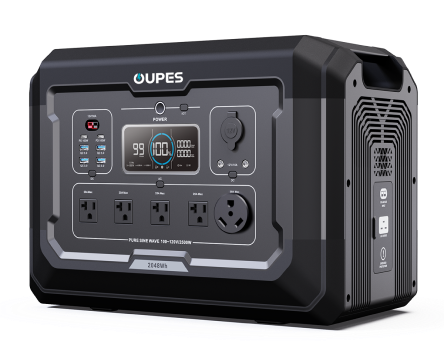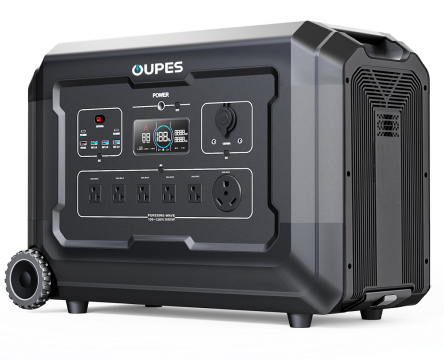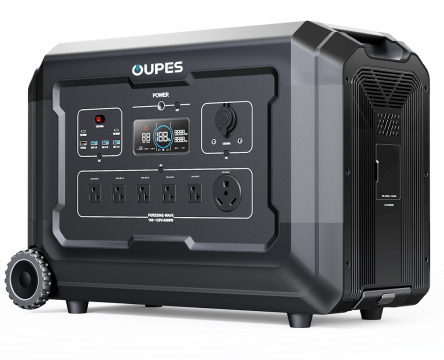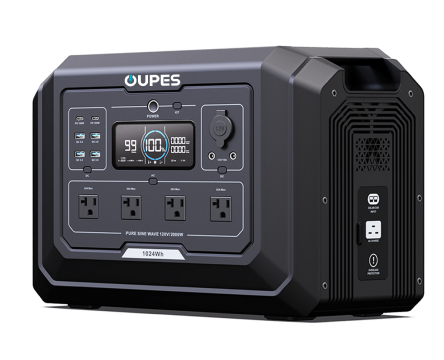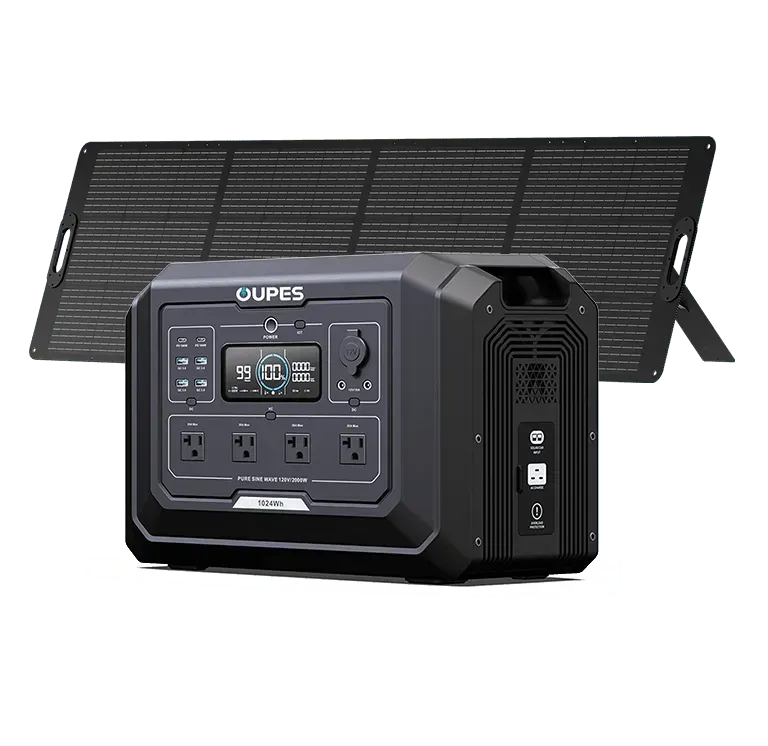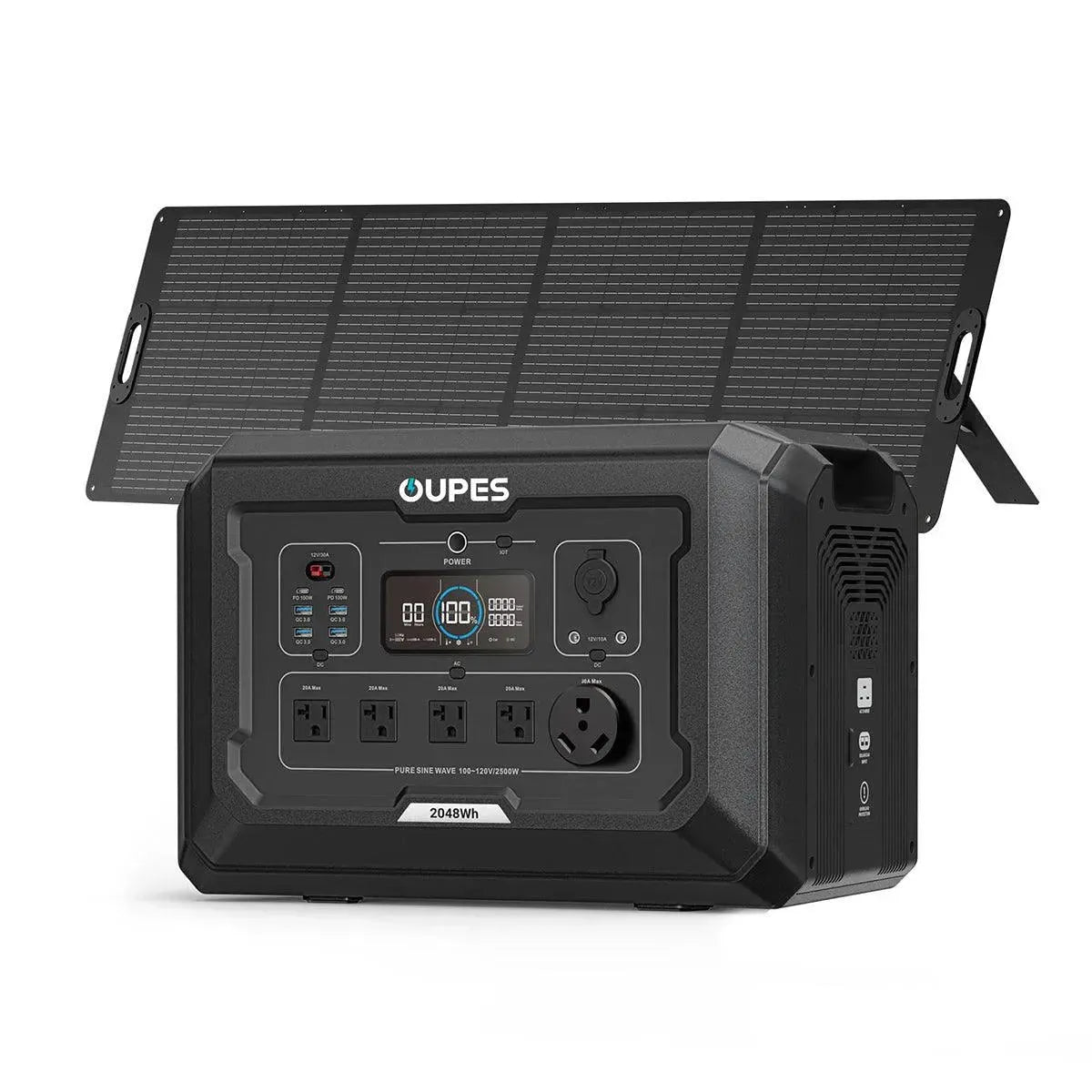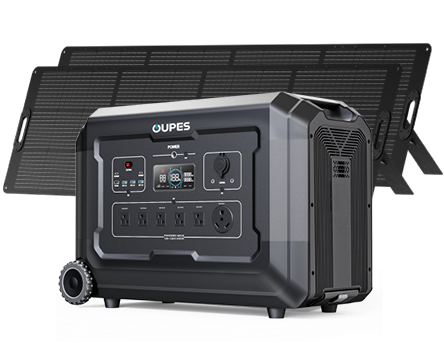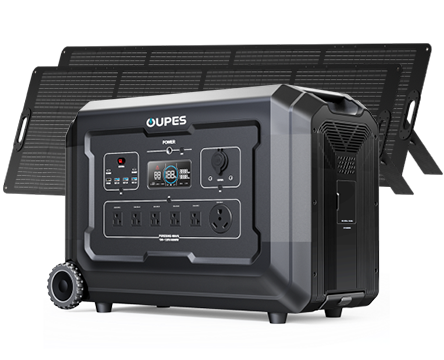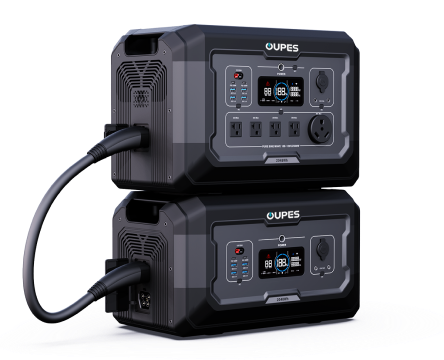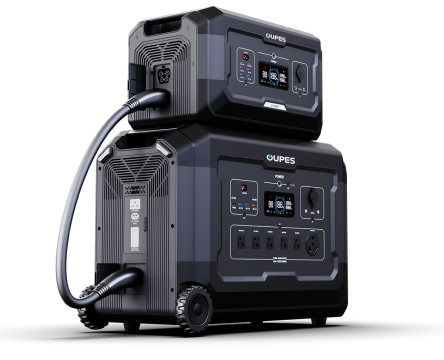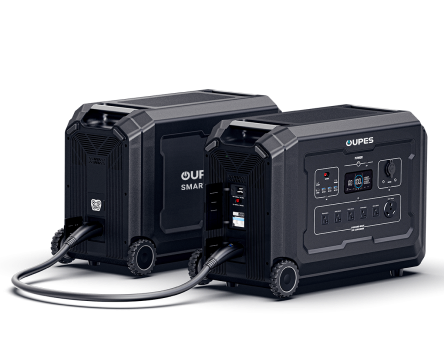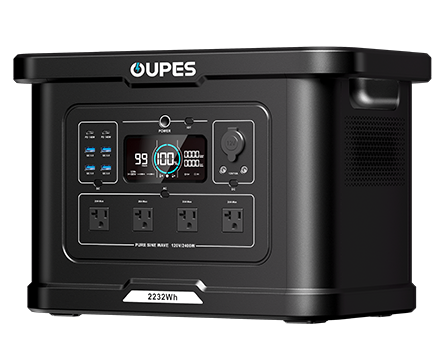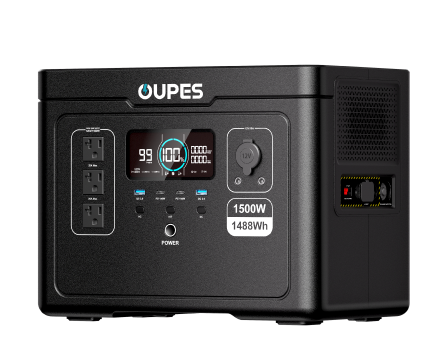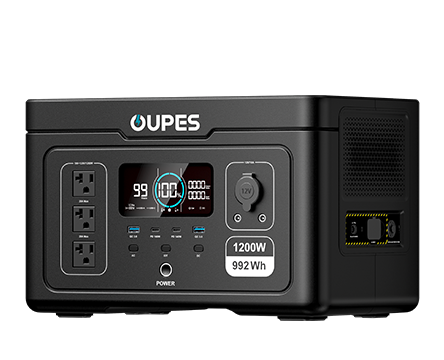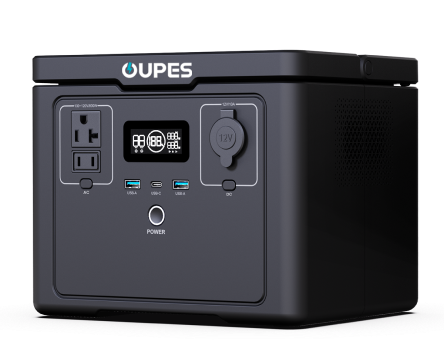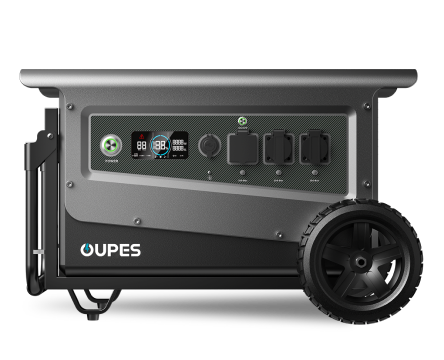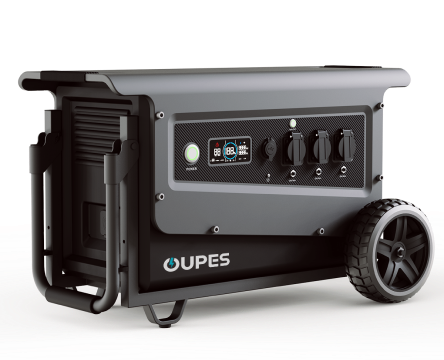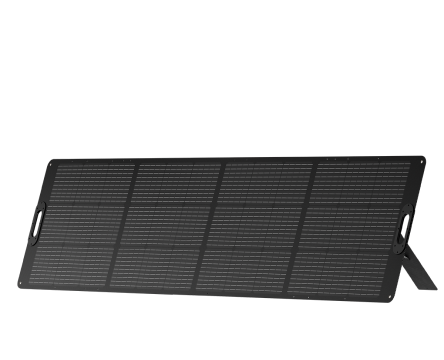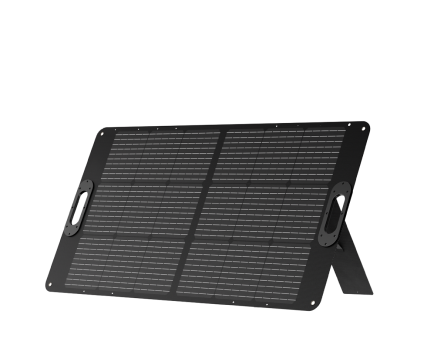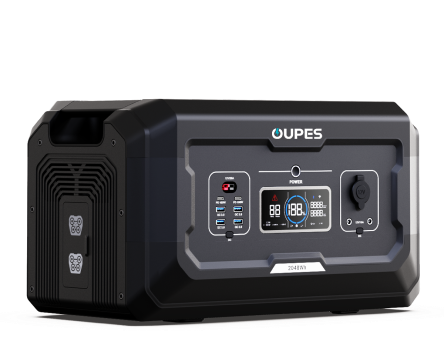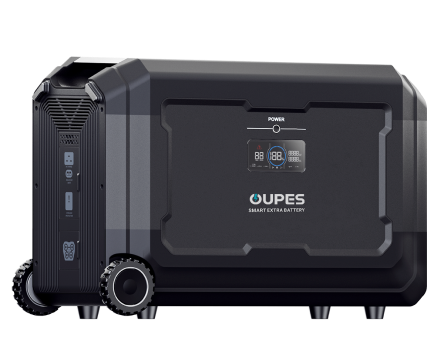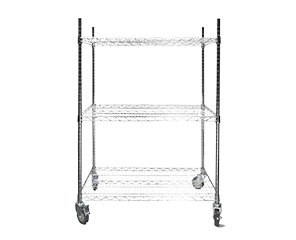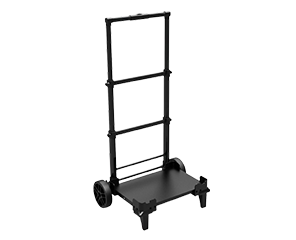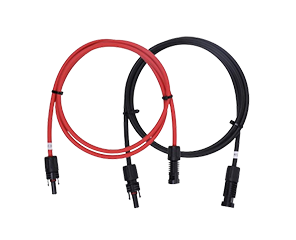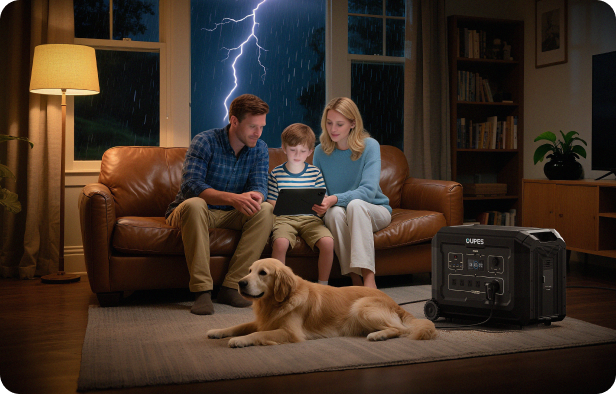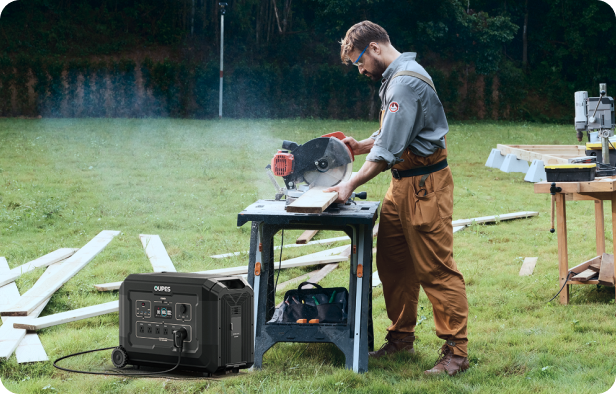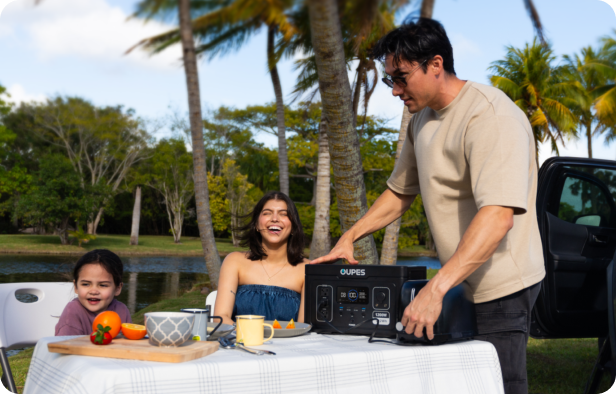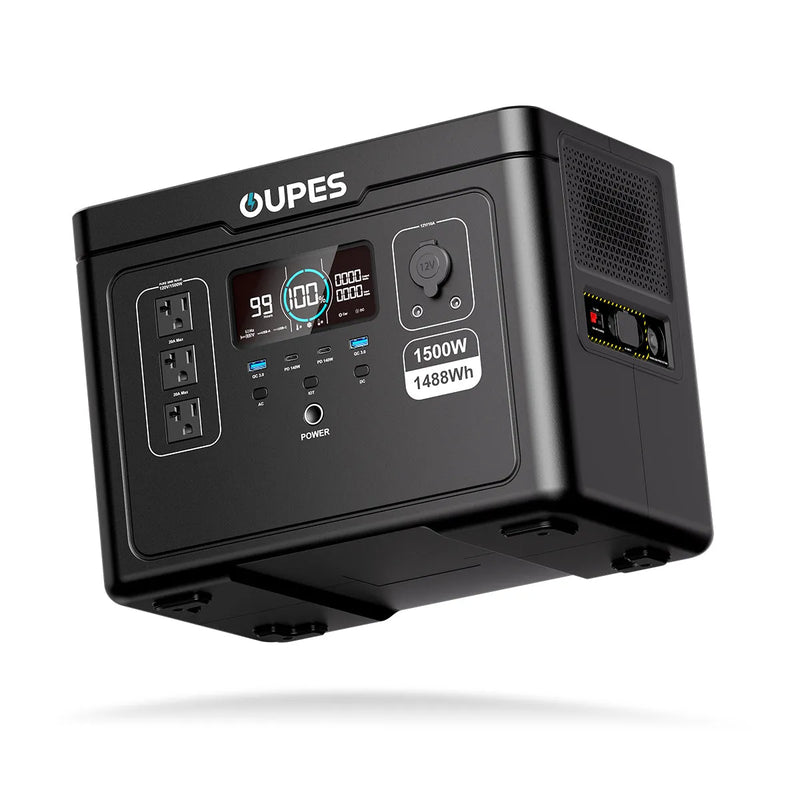
Fans are one of the most widely used appliances for cooling, but have you ever stopped to consider how much electricity they consume? With energy bills rising and sustainability becoming a priority, understanding the power consumption of fans is more important than ever.
In this guide, we’ll explore whether fans are energy hogs or economical cooling tools, how their usage compares to other devices, and how portable power solutions like OUPES stations can help you keep cool on- or off-grid.
How Much Electricity Do Fans Use?
Most fans are considered low-energy appliances, especially when compared to air conditioning units, heaters, or kitchen devices. The actual power consumption depends on the type and size of the fan, as well as its settings.
To measure fan consumption, we look at watts (W), which is the rate at which electricity is used. Here's a general breakdown of typical wattage for common types of fans:
| Type of Fan | Average Wattage |
|---|---|
| Ceiling Fan | 50 - 90 W |
| Table Fan | 30 - 70 W |
| Box Fan | 50 - 100 W |
| Tower Fan | 40 - 100 W |
| Industrial Fan | 200 - 500 W |
For example, if you use a 70-watt fan for 8 hours a day, the daily energy consumption is 560 watt-hours, or 0.56 kilowatt-hours (kWh). Over a month, that totals around 16.8 kWh—still a very modest figure compared to running an AC.
This low energy consumption makes fans excellent candidates for backup or off-grid operation using portable power stations. For instance, the OUPES Exodus 600 Plus with a 512Wh battery can run a standard box fan for approximately 6–10 hours on a full charge, depending on the fan’s settings.
Fans vs. Air Conditioners: Which is More Efficient?
One of the biggest questions consumers have is whether fans are more energy-efficient than air conditioners. The short answer is yes—by a wide margin.
Let’s compare their energy usage side by side:
| Appliance | Average Wattage | Daily Usage (8 hours) | Monthly Cost (at $0.15/kWh) |
|---|---|---|---|
| Box Fan | 75 W | 0.6 kWh | $2.70 |
| Central AC | 3,500 W | 28 kWh | $126.00 |
| Window AC | 900 W | 7.2 kWh | $32.40 |
As shown above, running a fan is significantly cheaper and more sustainable than operating an AC unit. While fans don't reduce air temperature like ACs, they do enhance air circulation, making people feel cooler through evaporative cooling of the skin.
If you’re in a situation where full air conditioning isn’t possible—such as RVs, camping trips, power outages, or eco-conscious homes—fans powered by a reliable unit like the OUPES Mega 2 Power Station (2048Wh capacity) provide an excellent balance of comfort and efficiency.
Fans also require no maintenance beyond occasional dusting, while AC units need filter replacements, coolant checks, and periodic servicing. From both an energy and maintenance perspective, fans are far more economical.
How Long Can Fans Run on a Portable Power Station?
One of the key advantages of using fans is that they’re highly compatible with portable power stations. Even entry-level stations can power fans for extended periods, making them ideal for off-grid cabins, emergency preparedness, and outdoor setups.
The runtime depends on three factors:
- Fan wattage – How much power the fan uses per hour.
- Battery capacity – How much energy the power station can store (measured in watt-hours).
- Efficiency losses – Typically 10-15% of energy is lost during power conversion.
Let’s take a real-world example: a 70W table fan paired with the OUPES Exodus 1200, which has 992Wh of usable power.
Runtime estimate: 992Wh ÷ 70W ≈ 14 hours (minus conversion losses, final runtime would be around 12–13 hours).
This allows for nearly a full day of use on a single charge, perfect for camping trips or prolonged blackouts. If more runtime is needed, stepping up to a larger model like the OUPES Mega 3 with 3072Wh capacity can triple that runtime, supporting multiple fans or a combination of appliances.
Unlike heavy-duty appliances, fans place minimal load on the battery, so you can power several at once without pushing the station to its limits. Fans can also be paired with solar panels for recharging, enabling continuous operation with sufficient sunlight.
Best Practices for Reducing Fan Energy Use
While fans are already efficient, there are still ways to optimize their energy use. Here are some strategies to help you save even more electricity while staying cool:
- Use at night: Take advantage of cooler nighttime air by running fans during evenings and early mornings.
- Pair with open windows: Fans are most effective when they can move fresh air through a space. Open windows on opposite sides for cross-ventilation.
- Use timers or smart plugs: Set fans to shut off automatically after a certain time to avoid unnecessary usage.
- Clean blades and grills regularly: Dust can reduce efficiency and airflow, causing the fan to work harder.
- Use energy-efficient models: Look for fans with energy-saving modes or those certified by recognized standards.
Additionally, placing fans strategically can improve their effectiveness. A floor fan aimed upward can circulate cooler air from the ground, while a box fan in a window can expel hot air. These small optimizations multiply the impact of each watt consumed.
For remote environments or outdoor use, combining these strategies with an efficient portable power station like the OUPES Titan 3 ensures longer runtimes and better cooling with minimal energy waste.
Conclusion
Fans do not consume significant electricity when compared to other household appliances. In fact, they offer a cost-effective and energy-efficient solution for cooling spaces, especially in climates where full air conditioning isn’t necessary year-round.
With the rise of portable power technology, products like the OUPES Exodus 600 Plus, OUPES Mega 3, and OUPES Titan 3 make it easy to power fans anywhere—from off-grid cabins to emergency shelters—without worrying about high energy demands.
By understanding how fans consume energy and how to optimize their use, you can stay comfortable while minimizing your environmental impact and energy bills. Fans remain a smart, sustainable choice for both everyday living and emergency preparedness.

